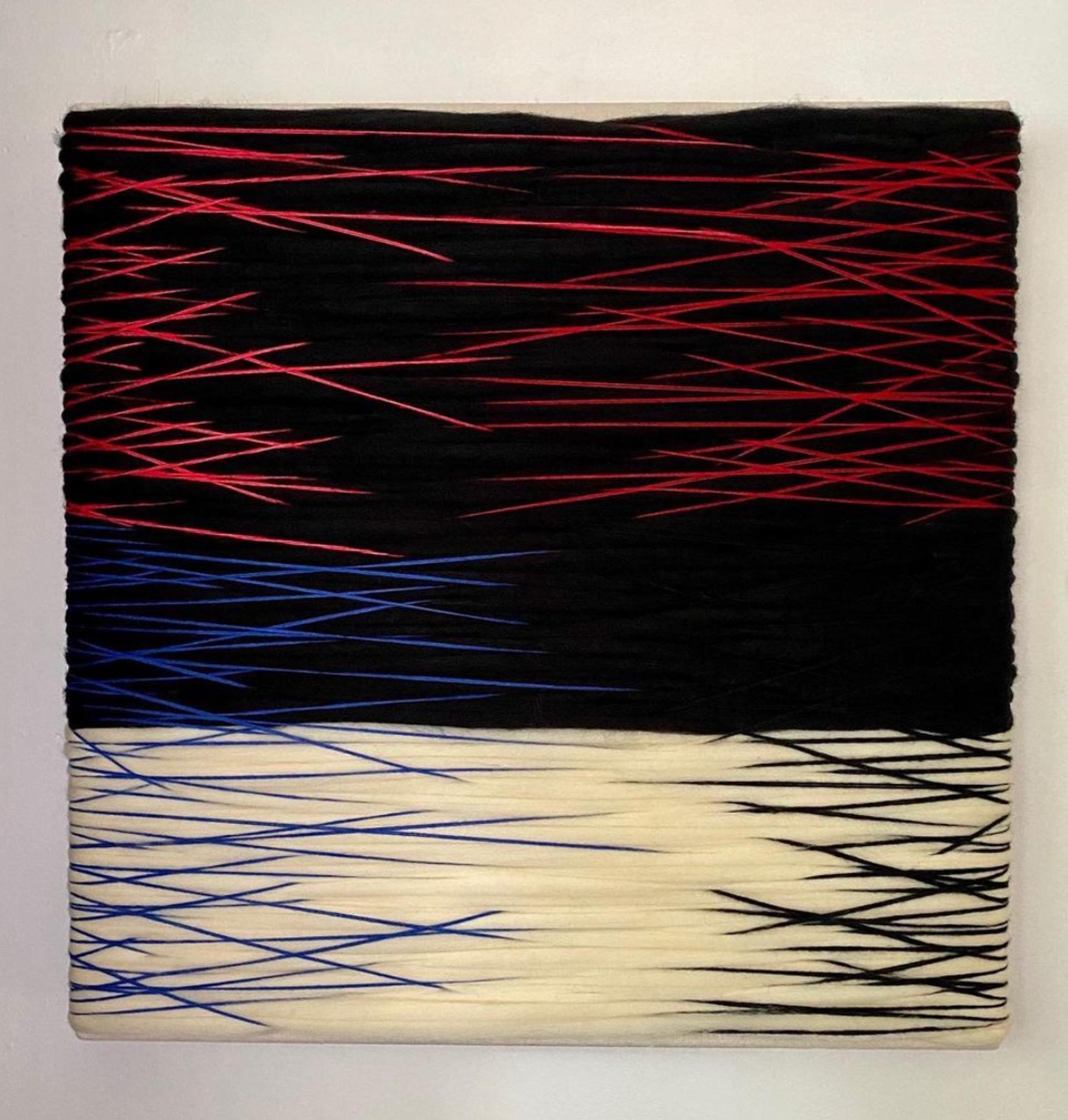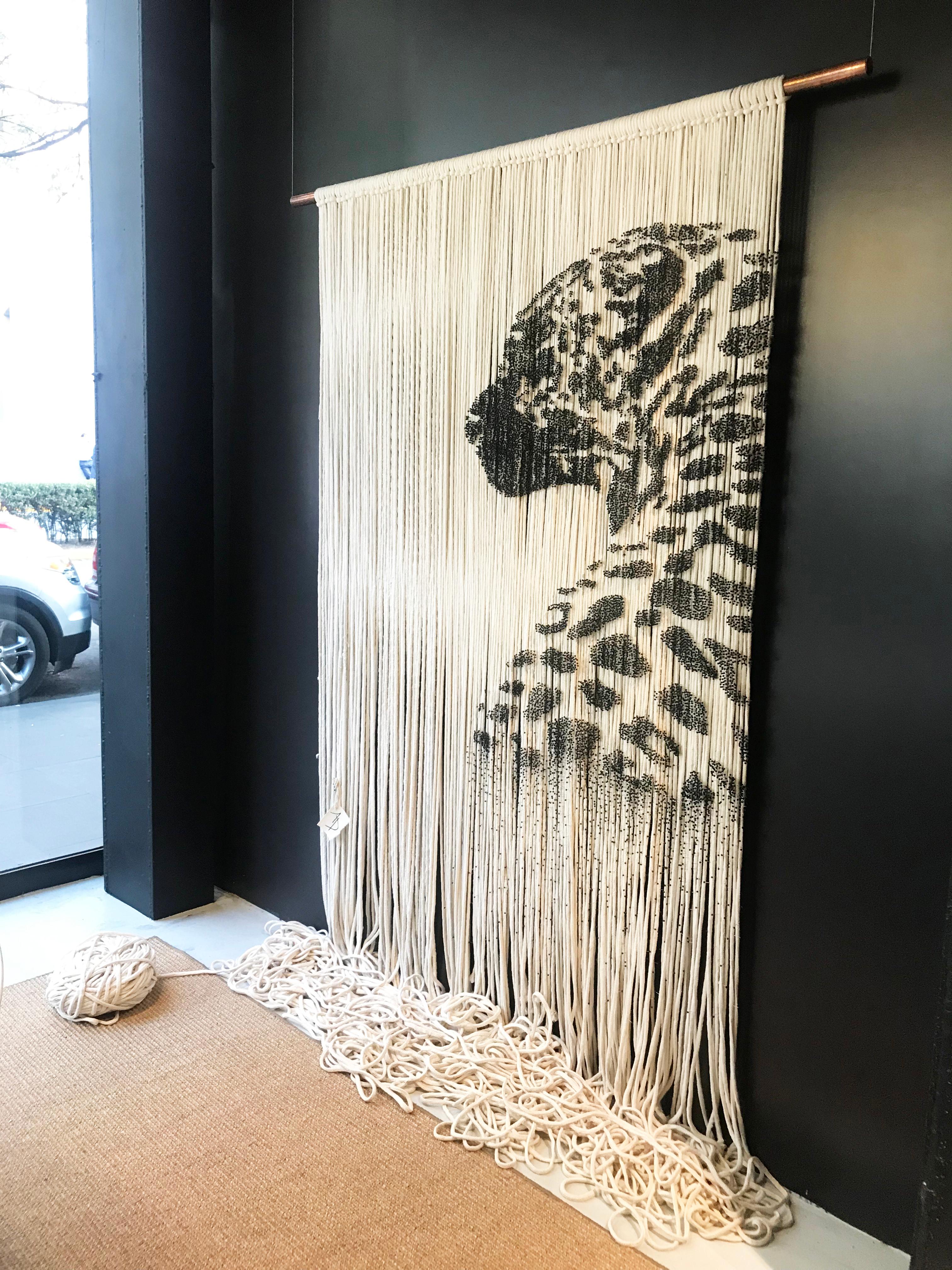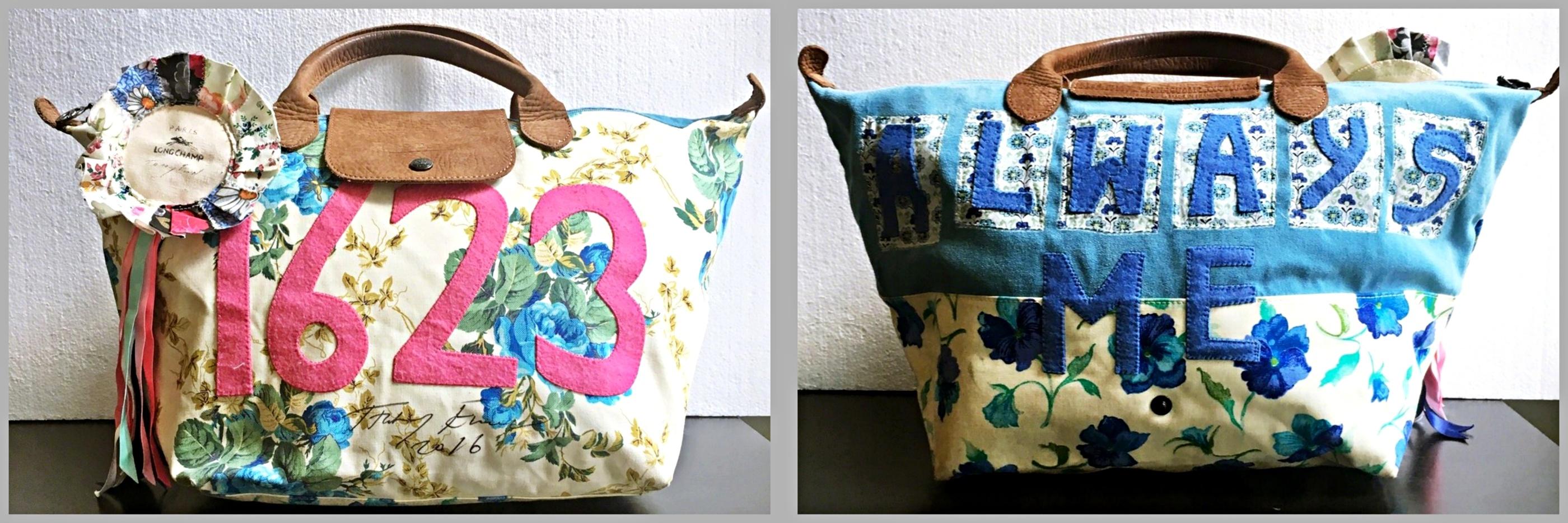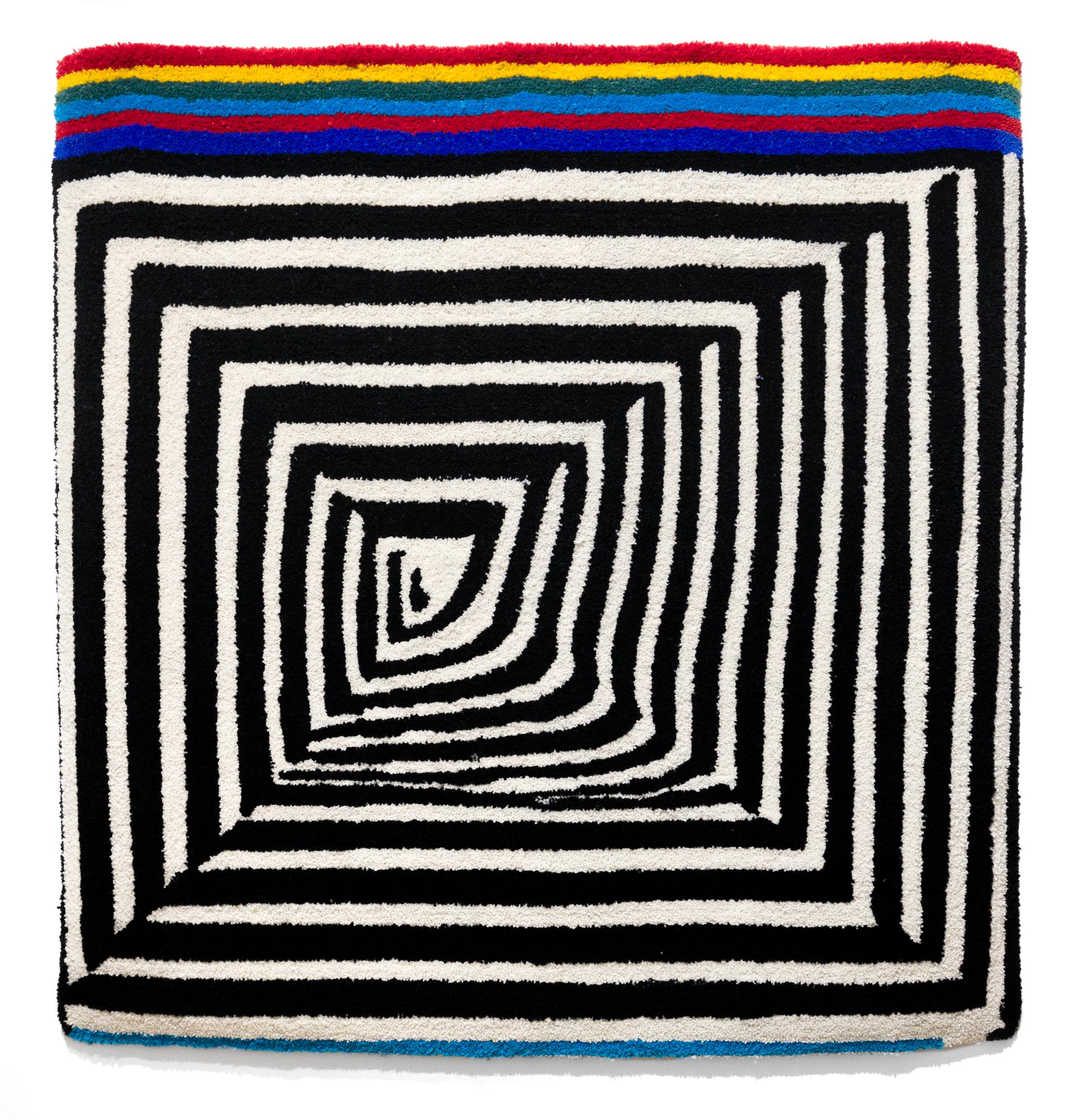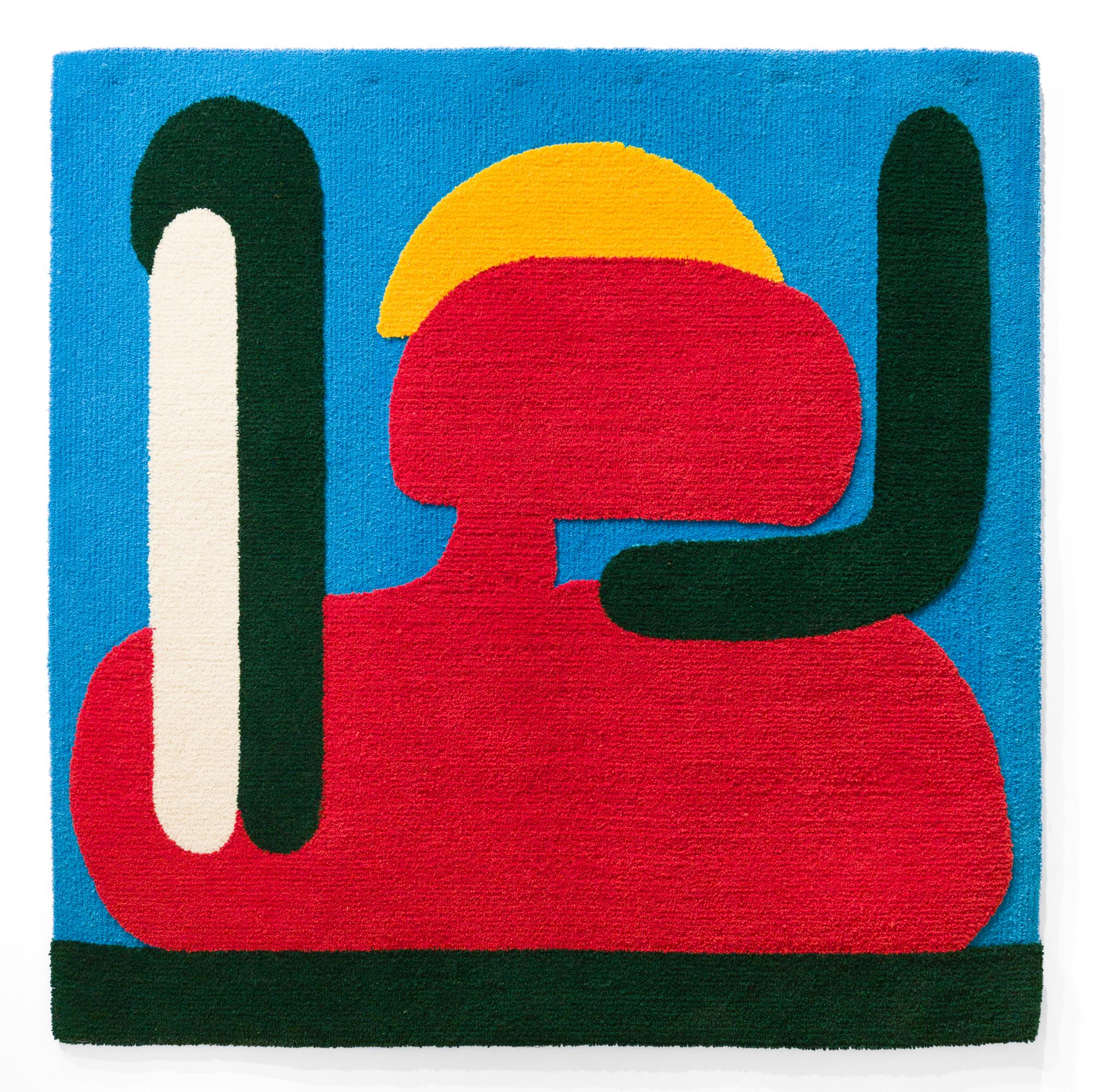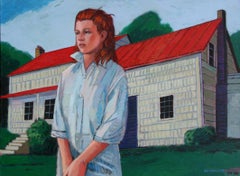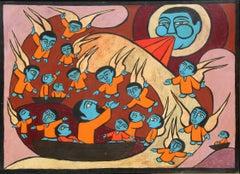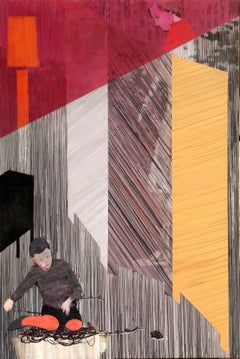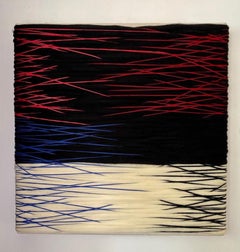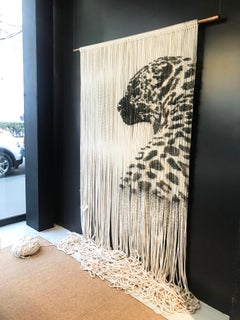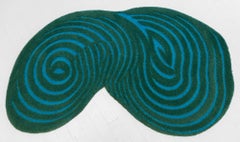Ottavio MissoniNumber 3, Missoni Tapestry Wall Hanging by Ottavio Missoni
About the Item
- Creator:Ottavio Missoni (1921 - 2013, Italian)
- Dimensions:Height: 28.5 in (72.39 cm)Width: 60.5 in (153.67 cm)
- Medium:
- Movement & Style:
- Period:
- Condition:
- Gallery Location:Long Island City, NY
- Reference Number:1stDibs: LU466401202
Ottavio Missoni
In 1953, Ottavio “Tai” Missoni (1921–2013) and Rosita Missoni (b. 1931) opened a small knitwear shop in Gallarate, Italy, paving the way for what would become an iconic style of colorful chevron knit.
Missoni began with a tracksuit, which featured zippers down the legs because, as Rosita recalls it, “Tai was too lazy to take off his shoes when putting them on.” The couple’s fashion really took off, though, once they discovered the Raschel knitting machine on a trip to a shawl factory. The machine enabled the Missonis to knit multiple colors in a zigzag pattern, a motif that would go on to become synonymous with the Missoni brand across everything from its alluring vintage day dresses and sweaters to its purses, seating and rugs.
Missoni held its first fashion show in Florence in 1967 and caused a bit of a sensation when the models’ Lurex dresses proved translucent under the lights at the Pitti Palace. Scandal aside, the show went down in history as a hit, and the Missonis soon made their debut in the United States with the help of legendary fashion editor Diana Vreeland, who gave the variegated Missoni stripe the Vogue seal of approval, saying, “Who says a rainbow has seven colors? It has many shades.” (It was also Vreeland who reportedly introduced the Missonis to Neiman Marcus president Stanley Marcus, effectively shepherding the brand to the American market.)
Missoni’s many-shaded rainbow would soon become an emblem of the 1970s fashion scene, earning the brand a permanent place in the fashion canon. In 1973, the New York Times proclaimed: “Missoni’s weaved garments have ended up universal materialistic trifles, as Vuitton sacks and Gucci shoes.” By then, Ottavio had been creating tapestries, and some of his knitted fabrics were shown in an exhibition at Galleria Il Naviglio in Venice in 1975.
The brand branched into the home market in 1983, with Rosita overseeing this new venture, Missoni Home, which included furniture, textiles and accessories. Daughter Angela succeeded her mother at the helm of the brand, where she served as creative director until 2021 and is currently president; her brother Luca is CEO, while her daughter Margherita was creative director of M Missoni, a modestly priced offshoot that was discontinued in 2021.
Find vintage Ottavio Missoni tapestries, rugs and other furniture today on 1stDibs.
- ShippingRetrieving quote...Shipping from: Long Island City, NY
- Return Policy
More From This Seller
View All1980s Contemporary Landscape Paintings
Canvas, Oil
1960s Contemporary Figurative Paintings
Canvas, Oil
21st Century and Contemporary Contemporary Interior Paintings
Linen, Wood, Oil, Acrylic
1970s Contemporary Abstract Paintings
Canvas, Oil
1990s Contemporary Portrait Paintings
Canvas, Oil
1970s Contemporary Landscape Paintings
Canvas, Oil
You May Also Like
2010s Contemporary Mixed Media
Textile, Wool, Cotton, Silk
2010s Contemporary Sculptures
Copper
Early 2000s Contemporary More Art
Leather, Wool, Cotton Canvas, Mixed Media
21st Century and Contemporary Contemporary Abstract Sculptures
Wool
21st Century and Contemporary Contemporary Abstract Sculptures
Wool
21st Century and Contemporary Contemporary Abstract Sculptures
Wool
Recently Viewed
View AllRead More
Romare Bearden’s Humanity Infuses His Bright, Bold Art
Through collage, painting and printmaking, the artist foregrounded Black life in America in revolutionary new ways.
Chryssa’s 1962 Neon Sculpture Was Way ahead of the Art-World Curve
By working with lettering, neon and Pop imagery, Chryssa pioneered several postmodern themes at a time when most male artists detested commercial mediums.
